Fans of active tourism like skiing, walking, and water-related sports will not be disappointed coming to the Komi Republic. Over 1,400 km northeast of Moscow, the Republic of Komi is one of the most precious havens in Russia for wildlife and natural reserves.
Who are the Komi people?
The Komi people are a Finno-Ugric ethnic group native to the region. With their own language—Komi-Zyrian—and unique customs, they have lived in harmony with the taiga forests, rivers, and tundra landscapes for generations. Their cultural identity is closely tied to reindeer herding, fishing, hunting, and craftsmanship.
They mainly live in the Russian Federation (but also in Hungary, Norway, Sweden, Latvia, Finland and Estonia) and specifically in the Komi Republic. They belong to the Permian branch of the people of the Finno-Ugric region.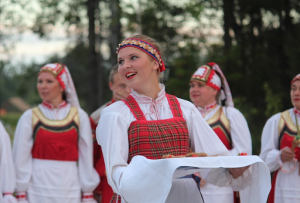
As of 2024, the Komi Republic has a population of approximately 721,000 people. According to the 2020 National Census, the region is home to a diverse mix of ethnic groups: Russians make up the majority with 69.69%, followed by the indigenous Komi people at 22.22%. Other ethnic communities include Ukrainians (1.93%) and a variety of smaller groups comprising 6.16% of the population. This ethnic diversity contributes to the rich cultural heritage and traditions of the Komi Republic.
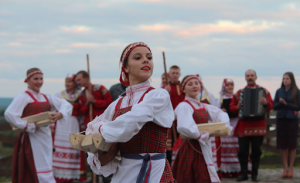
Komi Cultural Heritage
If looking at their oral practices and legends, Komi values and beliefs become observable. Their deep-seated bond with the natural world is kept intact. Once, river spirits were related to fishermen, woodland spirits to hunters. In the Komi culture, sacred animals have always been revered, especially the pike and the duck. In fact, the bones of these species have been used to make defensive amulets. Amulets with bear paws and fangs were also worn by hunters. Furthermore, trees were/are seen as holy, and the soul of the dead was assumed to be preserved by older trees. In several cemeteries, besides the Orthodox crosses, tree stumps can also be found near Komi graves.
Traditional Komi cuisine
The Komi are also renowned for their musical skills: all facets of life are originally followed by songs from birth to death. Their bridal songs, laments for grief and epics are of special cultural significance. They still have troves of folklore, riddles, limericks, witches, healers, and personified animal’ tales.
Why Visit the Komi Republic?
Whether you’re a nature enthusiast, cultural explorer, or industrial researcher, the Komi Republic has something extraordinary to offer. From vast mineral wealth and sustainable industry to indigenous culture and eco-friendly tourism, Komi is a true hidden gem waiting to be discovered.
Forests and shrubs occupy about 80 percent of the region. What is more, the fauna here is rich, and as many as 33 species of birds, 15 mammal species and six types of fish are on the list of protected species. Animals such as elks, bears, beavers, otters, foxes, minks and lynxes are found here as well.
This region is home to over 78,000 lakes, and wetlands cover nearly 15% of its territory.
The Komi Republic
Komi experiences a temperate continental climate: winters are long and cold, while summers are short and vary from warm in the south to cool in the north. Average temperatures range from −20°C in January in the north to 17°C in July in the south.
Ecotourism and Adventure Travel
For lovers of nature and adventure, Komi is a paradise. Highlights include:
- The Pechora Alps and Subpolar Ural forests
- The Pechora-Ilych Nature Reserve with pristine landscapes and rare flora and fauna
- The Iordanskogo Ravine Caves, home to Europe’s largest collection of prehistoric wildlife remains
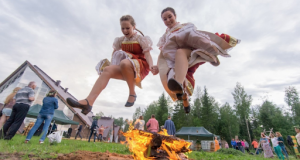
Ethnic and Winter Tourism
In winter, ethnic tourism thrives. Visitors explore Mansi and Komi reindeer herding traditions, participate in local holidays, and enjoy the snowy wilderness through skiing, snow trekking, and more.
By the end of the 19th century, the Komi had become one of the world’s largest reindeer herding communities, borrowing Nenet (reindeer herders in Russia’s Arctic) methods while making their own adaptations. For the sake of transportation, reindeer are used, along with wood and birchbark vessels that have historically been utilised up and down the rivers. A major part of their diet is reindeer meat and fish, salted for preservation.
Euro news, in an article about Komi, writes: visiting the Komi republic is perfect for those who want to escape from the hustle and bustle of big cities and crowded tourist routes.

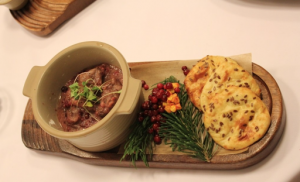
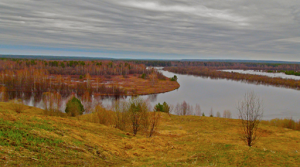
This Post Has 0 Comments